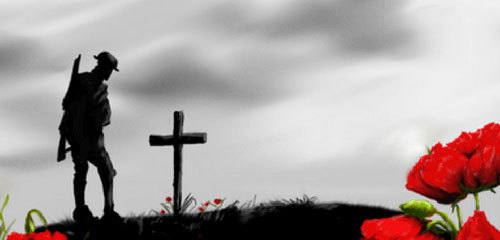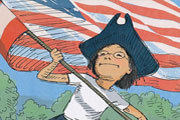Most of us take a moment on November 11th to remember the veterans who fought for our country. However, not many of us know the full history behind this day of remembrance.
Veterans/Remembrance Day - The History
In 1918, World War I ended on the 11th hour of the 11th day of the 11th month. The entire world celebrated. An armistice (a truce) was signed declaring the "war to end all wars" was finally over. The next year, on November 11th, the US called the day "Armistice Day" in memory of all the men and women involved in WWI. On Armistice Day, surviving soldiers marched in parades through their home towns. Politicians and veteran officers gave speeches and had ceremonies in thanks for the peace that had been won.
 Lest We Forget
Lest We Forget
Veterans/Remembrance Day - The Holiday With Many Names
Twenty years after WWI, Armistice Day became a federal holiday. Sadly, WWI hadn't been the war to end all wars. World War II began in 1939 and lasted until 1945. During this time Armistice Day was suspended. After a long battle and the end of WWII, Armistice Day was held again on the 11th of November. The name also changed to Veterans Day in honor of Americans who had fought in other wars. Other countries, like Canada, call this day Remembrance Day. Several countries also honor victims from various wars fought in places like Vietnam, Korea, Afghanistan and Iraq, in their memorial services. Veterans and Remembrance Day is also the perfect time to think of those soldiers who are still in battle today.
 Veterans Day celebrates soldiers who fought, and still fight, everywhere
Veterans Day celebrates soldiers who fought, and still fight, everywhere
Veterans/Remembrance Day - Observing the Holiday
Veterans Day ceremonies occur all over the world with veterans laying wreaths at war memorials and speaking to the public. At the 11th hour, everyone, including school children, take a moment of silence to remember those who died. On Veterans Day, organized veteran's groups (like The American Legion Auxilary and Veterans of Foreign Wars) raise funds for their charities by selling plastic poppies. Ribbons may also be sold for people to wear in remembrance.
 Remembering the soliders that were lost
Remembering the soliders that were lost
Veterans/Remembrance Day - In Flanders Fields
Poppies, which are a bright red flower, became a symbol of Veterans Day after the bloody WWI battle in Flanders Field, in Belgium. The soil in the battle fields became scattered with rubble, making the soil rich with lime (the mineral, not the fruit). Poppies thrived in the fertile soil. Many soldiers were buried in Flanders field, creating a contrast of white crosses and vibrant red poppies. Major John McCrae was a Canadian surgeon who was moved by the sight of this, leading him to pen one of the most memorable war poems ever written - "In Flanders Fields".
 Poppies are a symbol of remembrance on this day
Poppies are a symbol of remembrance on this day
Have Your Say
How do you remember this special day? Comment below!

































